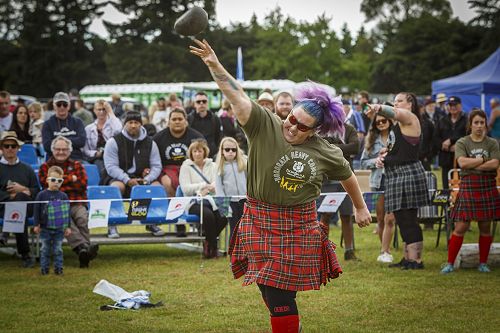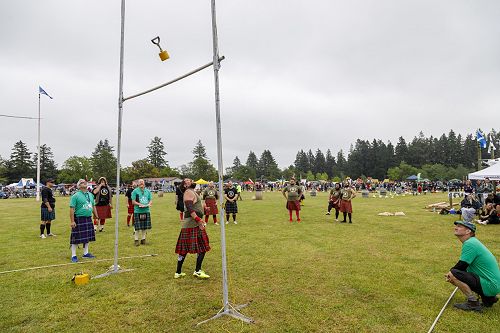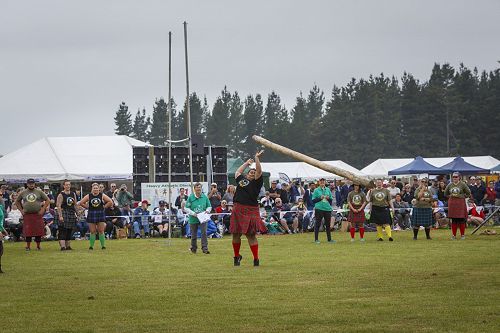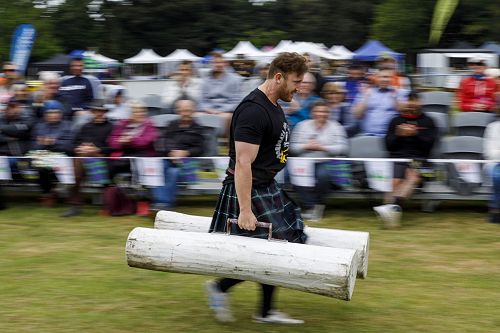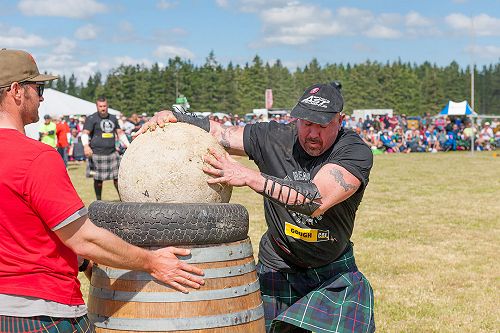
Manawa Energy Heavy Championships
Everything you need to know about Highlands Games Heavy Athletics.
The Hororata Highland Games is the only place in the South Island where you can witness these strong men and women compete in traditional heavy athletics disciplines.
Heavy athletics refers to the athletic events which require significant strength and power; as opposed to light athletics, which require stamina, such as highland dancing, sprinting, running, and jumping.
Scottish heavy athletics should not be confused with "strongman" competitions. Scottish heavy athletic events are traditional events involving traditional equipment, while the strongman events have been mostly invented recently, using modern equipment.
Click here to view the 2025 Athlete Profiles
Please note this information is intended for an overview of the disciplines to view the official rules click here.
General rules: The athletes get three throws total for the throwing events, and they are eliminated from the tossing events after three consecutive misses. The athletes are put in an order of rotation, and each athlete takes one throw at a time in order. The scoring is similar to track and field scoring of horizontal field events. The scoring of the sheaf and weight for height is similar to the scoring of the track and field vertical jumps (pole vault and high jump). The lowest total points win the Championship.
General Guide to the Disciplines:
Stone Putt
Stone Putt weight at the Hororata Highland Games – 8 pounds and 18 pounds
The stone putt, or clachneart, involves "putting" the stone as far as possible. The stone must be put; i.e. like in the shot put; the stone may not be thrown from behind like a baseball, underarm like a softball, or overhead with two hands.
The two basic techniques in use in the present are the glide and the spin. In the glide, the athlete faces away from the direction of the throw and scoots toward the trig before releasing; in the spin, the athlete spins around 360 degrees to gain momentum.
Weights
The weights are 28 pounds and 56 pounds. The 28 pound weight is thrown, measured by distance and the 56 pound heavy weight is tossed, measured by height.
Athletes get 9 feet behind the trig for the weight throws. They usually do two turns before releasing. The toss is thrown over a horizontal bar, which is raised incrementally. Athletes get three attempts to clear each height. As the bar is raised, athletes who do not clear are eliminated. The process is similar to the high jump or the pole vault in track & field.
The Hammer Throw
The Scottish hammer has a total length not exceeding of 4'2". The weight of the hammer is 16 pounds or 22 pounds.
The athlete must throw the hammer from behind the trig from a stand. In the Scottish hammer, the athlete swings the hammer around faster and faster, and then releases.
The Sheaf Toss
The sheaf has three weights 12, 16 or 18 bag of hay, that is tossed over a bar with a two-tyned pitchfork. It is conducted like the weight toss, except it goes about twice as high.
Three chances are given to each athlete toss the sheaf over the bar. The sheaf can touch the bar so long as it goes over. After all challengers have made their attempts, the bar is raised and all successful competitors move on to the new height. This continues until all but one athlete is eliminated.
Caber Toss
The caber is basically a log that athletes attempt to flip end-over-end. The caber is judged by the straightness of the turn by the head judge, who follows behind the athlete to get the best view.
If the athlete fails to turn the caber (the caber does not land between 9 and 3 o'clock), the side judge estimates the maximum angle that the caber achieved from vertical (from 0 to 90 degrees). The Caber must break 90 degrees to be judged as sometimes they can twist through without falling directly. A perfect execution is called a "twelve o-clock turn," where the caber falls straight away from where the athlete released it. In a 12-o-clock toss, the caber falls away from the thrower, and the caber forms a straight line through the thrower. Sometimes the caber falls off slightly to the side. This may be a 10-o-clock, or 11:30, etc. Note that in scoring, a 10:00 is equivalent to a 2:00.
Farmers Walk
A test of endurance, grip strength, and mental toughness, the Farmers Walk is a timed event in which the contestant carries a 100kg weight in each hand over a course that is down and back. The athletes cannot set or drop the implement. The fastest time wins.
Hororata Stones
Hororata Stones are a version of McGlashan Stones. Athletes must lift five Stones onto the top of wine barrels, racing the clock (stones must remain on the barrel). The fastest athlete to complete all stone lifts wins. The stone increase in weight at each barrel from 90kg to 140kg. This is one of the most exciting and fast-moving events to watch at the Hororata Highland Games. The Hororata Stones have been donated by David Huxley from the Tartan Warriors.
Gallery
